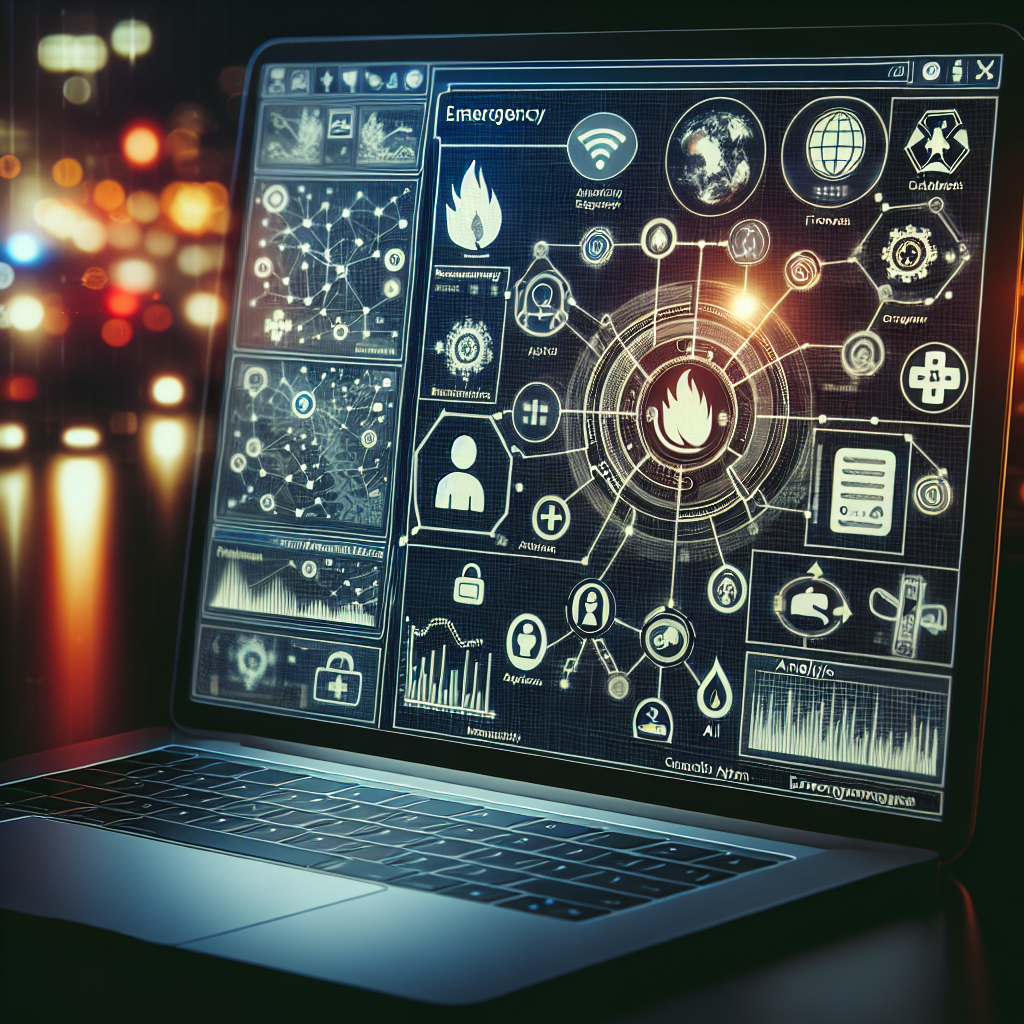In recent years, artificial intelligence (AI) software has been increasingly utilized in emergency response situations to help improve the efficiency and effectiveness of response efforts. From natural disasters to medical emergencies, AI software has the potential to revolutionize the way emergency responders handle crises and save lives. In this article, we will explore the role of AI software in emergency response and how it is being used to enhance response efforts.
One of the key ways in which AI software is being used in emergency response is through predictive analytics. By analyzing large amounts of data, AI algorithms can help predict the likelihood of certain events, such as floods, wildfires, or disease outbreaks. This can help emergency responders better prepare for and respond to these events, potentially saving lives and reducing the impact of disasters.
For example, AI software can analyze weather patterns and historical data to predict when and where a hurricane is likely to hit. This information can then be used to help authorities evacuate residents in at-risk areas, set up emergency shelters, and deploy resources to the most affected areas. By using AI to predict and prepare for disasters, emergency responders can be more proactive in their response efforts and better protect the public.
Another way in which AI software is being used in emergency response is through image recognition technology. During a disaster, responders often need to quickly assess the extent of damage and identify areas that require immediate attention. AI software can analyze images and video footage from drones, satellites, or surveillance cameras to identify damaged buildings, road blockages, and other hazards. This information can then be used to prioritize response efforts and allocate resources more effectively.
For example, after a major earthquake, AI software can analyze drone footage to identify collapsed buildings and trapped individuals. This information can help rescue teams focus their efforts on the most critical areas and rescue people more quickly. By using AI to analyze images and identify hazards, emergency responders can work more efficiently and effectively in disaster situations.
In addition to predictive analytics and image recognition, AI software is also being used in emergency response for decision support. During a crisis, responders often need to make quick decisions under pressure, with limited information available. AI software can help analyze data in real-time, provide recommendations, and assist responders in making informed decisions.
For example, in a medical emergency, AI software can help doctors diagnose patients more quickly and accurately by analyzing symptoms, medical history, and test results. This can help doctors provide the most appropriate treatment and improve patient outcomes. By using AI for decision support, emergency responders can make better decisions in high-stress situations and provide more effective care to those in need.
Overall, AI software has the potential to revolutionize emergency response efforts by providing predictive analytics, image recognition, and decision support capabilities. By leveraging AI technology, emergency responders can be more proactive, efficient, and effective in their response efforts, ultimately saving lives and reducing the impact of disasters.
FAQs:
Q: How is AI software used in natural disaster response?
A: AI software is used in natural disaster response for predictive analytics, image recognition, and decision support. It can help predict the likelihood of disasters, analyze damage through images, and assist responders in making informed decisions.
Q: Can AI software help in medical emergencies?
A: Yes, AI software can help in medical emergencies by analyzing symptoms, medical history, and test results to assist doctors in diagnosing patients more quickly and accurately.
Q: What are the benefits of using AI software in emergency response?
A: The benefits of using AI software in emergency response include improved efficiency, better decision-making, and ultimately, saving lives and reducing the impact of disasters.
Q: How can emergency responders integrate AI software into their response efforts?
A: Emergency responders can integrate AI software into their response efforts by partnering with technology companies, training their staff on AI tools, and incorporating AI technology into their existing response systems.

